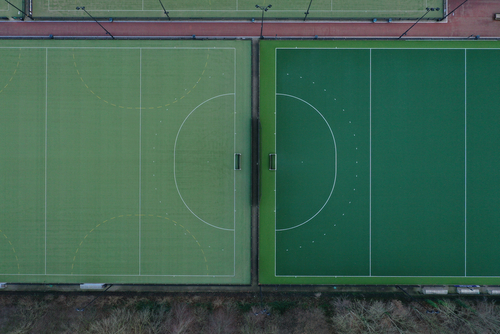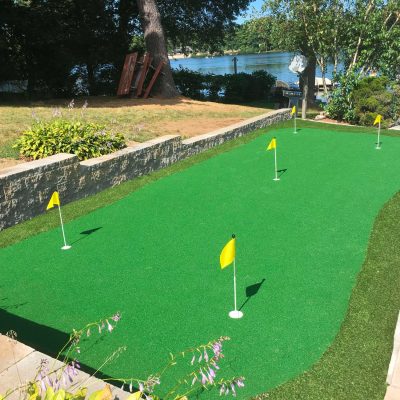Designing multi-sport areas with athletic turf requires a careful balance of versatility, durability, and safety to accommodate a variety of athletic activities. A practical design starts with selecting the correct type of synthetic turf that meets the performance and durability standards for the sports range. Additionally, strategic planning for field markings, lighting, and maintenance access is crucial to support the diverse needs of multiple sports. By integrating the necessary elements thoughtfully, designers can create dynamic, multi-functional spaces that enhance the athletic experience for all users.
Types of Athletic Turf
Choosing the suitable types of athletic turf for multi-sport areas involves critical evaluation. Hence, it’s essential to know the various types available.
- Synthetic Turf
Synthetic turf offers consistent performance, lower maintenance, and better durability. It’s ideal for high-traffic areas and provides a safe, uniform playing surface.
Types of Synthetic Turf Materials
- Polyethylene (PE) is soft and resilient, making it a popular choice for sports fields. It provides good traction and a natural look.
- Nylon is extremely durable and can withstand heavy use, but it is also more abrasive and expensive. Therefore, nylon is often used in areas with high wear.
- Polypropylene (PP): is less durable and more affordable, typically used in less demanding applications or as an infill.
- Natural Turf
Natural turf is preferred for its aesthetic appeal and natural feel. It requires more maintenance, including mowing, watering, and fertilizing, and can be more prone to damage from heavy use.
Performance Characteristics
Another thing you should consider, apart from material types, is the performance characteristics of the turf.
- Pile height: The length of the turf fibers. Shorter piles are suitable for sports like field hockey, while longer piles are better for soccer and football.
- Density: The closeness of the turf fibers. Higher-density turfs provide a more robust surface, vital for sports requiring quick movements and direction changes.
- Infill types: Materials such as sand, rubber, or organic infill support the turf fibers and provide cushioning. The choice of infill affects the turf’s shock absorption, traction, and heat retention.
Design Considerations for Multi-Sport Areas
Designing multi-sport areas with athletic turf involves a comprehensive approach to ensure the facility meets the diverse needs of various sports.
- Assessing the needs of different sports: Understand the unique demands of each sport (e.g., soccer, football, lacrosse, field hockey). Also, ensure the design accommodates surface texture, traction, and shock absorption needs.
- Field dimensions and layout flexibility: Incorporate design elements that allow the field to be easily reconfigured for different sports. This could include movable goals, modular boundaries, and retractable nets.
- Incorporating multi-use lines and markings: Use different colors and materials for permanent lines for primary sports and temporary or easily removable markings for secondary sports.
- Safety features: Install shock-absorbing pads beneath the turf to reduce impact and lower the risk of injuries, especially for high-contact sports. Also, select appropriate infill materials (e.g., rubber, sand) to provide cushioning and support, reducing stress on athletes’ joints and muscles.
- Drainage systems and water management: Design an effective drainage system to handle heavy rainfall and prevent waterlogging. This includes proper grading, subsurface drainage pipes, and permeable base layers.
- Lighting and accessibility: Install high-quality lighting systems to ensure the field is usable during evening hours and in various weather conditions. Consider energy-efficient LED lights for cost savings and environmental benefits.
- Seating and spectator areas: Design spectator areas with comfortable seating, good visibility of the playing field, and adequate protection from the elements.
Contact Northeast Synthetic Turf For Our Expertise in Designing Multi-Sport Areas
Northeast Synthetic Turf excels in designing multi-sport areas, leveraging years of expertise and a commitment to innovation to create versatile, durable, and high-performance athletic spaces. Their team of experienced designers and engineers meticulously assesses each sport’s unique requirements to deliver custom solutions. To learn more, contact Northeast Synthetic Turf through the online contact form.


